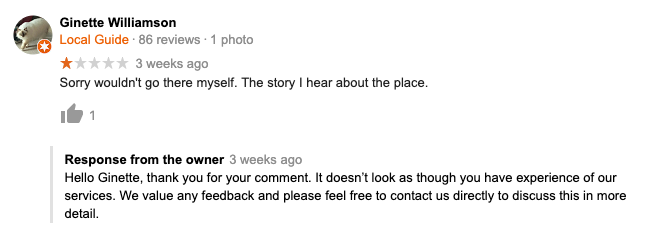Why NPS® is an irrelevant metric
If you’re not familiar with NPS® it stands for Net Promoter Score® and is a calculation used across the world by businesses large and small to ascertain whether their overall customer experience is positive or not. It is mostly based on a score from 1 to 10 with the following question at its core “on a scale of 1 to 10 with 1 being not at all likely and 10 being very likely how likely are you to recommend [insert business name] to someone else?”.
Created by Fred Reichheld and published in the Harvard Business Review in 2003, the Net Promoter Score® is the defining methodology for understanding whether customers enjoyed working with your brand enough to promote you to other people. It’s been the mainstay of measuring customer satisfaction ever since its inception.
Yet, at nearly 20 years old, the model is becoming less relevant. To understand why take a quick look back two decades and recall the dizzying heights of current events of that time. Mark Zuckerberg was busy building a small website, nope not that one, this one was called Facemash, Apple had just launched iTunes Music Store (yes, that’s what it was originally called) and by the end of the year Finding Nemo had just beaten Lord of The Rings: The Return of the King as the highest-grossing film of the year (by $3m dollars).
Needless to say, a lot has changed in the decades since. Apart from how we score customer satisfaction at a corporate level, that is.
Customers have definitely opted for a more user-friendly version, they’re more used to rating things out of 5-stars. They don’t even need to be asked an associated question, and certainly not one as long as the statutory NPS® one-liner. All they need is to be shown 5 stars or 5 faces and they know what to do.
Simply look at Airbnb ratings, Facebook recommendations, Google reviews and even how critics review a movie and you can see that there’s a more popular system already in use. So why do businesses’ stick with an out-dated metric? After all, will a customer resonate more with your 5-star Google Review or you proudly touting your 8.7 NPS score on your website?
In many ways breaking down something as complicated as a customer’s relationship with a business into a single question is a significant oversimplification of a multi-faceted relationship. The relationship is also not static, asking the question once doesn’t mean the next time you ask the same customer you'll get the same score. You may have experienced service that was so poor you would have scored that business low on an NPS®, only to have a member of the customer care team go above and beyond fixing the issue that you now find yourself to be a super promoter. Few systems could handle this ever-changing dynamic.
Another reason NPS® has become a dead metric is the way companies have chosen to use it as a box-ticking KPI rather than a metric that drives real change. Yes, it indicates whether improvement needs to be made to a service or an experience but often the scores go nowhere. Service reps hunt a good score, rather than pursue a customer-centric culture. The NPS® score becomes the goal, not the attitude that drives a good result. And this isn’t the fault of the service reps. What business-changing insight comes from a score of 8 over a score of 8.5?
Finally, NPS® doesn’t have any way of moving the business forward, other than a quick-glance dashboard on a screen giving managers a fuzzy feeling if it’s above the agreed threshold. Any business publishing their NPS® score on their website would be laughed out of the room by customers. Surely it’s more important to a business that a customer actually recommends them to people rather than simply saying that they will.
“Would you recommend us to someone else, or would you recommend us to thousands of strangers?”
A 5-star system is not infallible, even Amazon has needed to take sellers to task over falsifying their ratings. Google is struggling with ‘Local Experts’ that post fake reviews on businesses that they have never experienced.

Google’s review system does, at least, go beyond just a score, which is more than can be said of NPS®. Users will often use the score to understand the sentiment of the comment, then read the review in detail to see the nature of the experience. Businesses have been using a similar tool to reviews in their marketing in the form of testimonials, but these can be viewed with scepticism by customers (almost as much as pure 5-star reviews raise an eyebrow!).
Reviews are incredibly important to all businesses, especially on platforms that inform a customer’s decision making. For some, that means investing in Facebook Recommendations, for others, it’s appearing higher on Google with reviews on a Google My Business page or linking to Tripadvisor (very important as Google pulls in these reviews too).
So why not simply direct people to your Google My Business page or Facebook recommendations link?
For small businesses that simply want reviews this may be the ideal approach, especially if you know the customers personally and are confident that they will give you a glowing review. However, larger businesses need the accountability of understanding where good reviews come from, and if bad reviews are indicative of a particular branch or individual which may need to be addressed. Therefore tracking the review source, and comparing it to others, is important. Larger businesses may also ask for feedback at multiple stages of the buying process and may want the chance to address poor experiences directly. In these cases having a negative public review may have been avoided if a customer service rep had addressed a negative experience sooner.
So how do you combine getting more public reviews with internal tracking, customer feedback and accountability?
First, you need to develop a feedback strategy for your business. Leaving a tin of paper slips near a pen is better than nothing but that’s not going to help your search engine rankings (SEO) or help people identify you as the perfect supplier before they’ve visited your website.
With reviews directly impacting your rank on Google your SEO strategy should be linked to your customer feedback strategy. Chances are your marketing team is working hard to get your website a higher rank, but customer services could actually be their secret weapon in achieving more online reviews and greater conversion during the customer’s search phase.
Secondly, you might need to ditch the idea of NPS® being the main benchmark for customer relationship management. Internally you may have a score of 73% (pats on the back all-round!) but if your average Google Review ranks you at 3 stars you may find customers care more about one than the other. Sales will certainly thank you for leveraging the business’s great reputation to make selling easier.
Finally, it’s important for the business to see customer feedback and reviews as an ongoing cycle, rather than an endpoint score. Fix bad customer experience, preferably before they rant about it on Google, and use your promoters to, well, promote your business.
In summary, NPS® is a dead metric because much better measurements of customer satisfaction have emerged in the nearly two decades since its inception. Times have changed, customer expectations have been revised yet NPS® has remained the same.
To begin, use a platform that makes it easy to gather customer feedback tracked across multiple sources so you can measure effectiveness. Then, use a platform that encourages respondents to leave a public review after giving you their feedback, that way you can combine the best of harvested performance scores with SEO improving (and buyer-persuading) public reviews.
To discover a platform designed to do just that click the button below.




